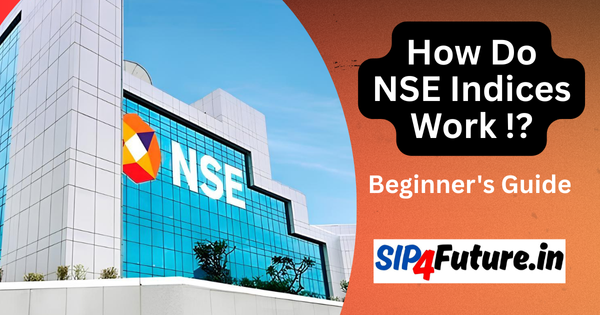Nippon Life India Asset Management Limited (NAM India), a leading player in India’s asset management industry, has delivered an impressive performance in FY25, cementing its position as a powerhouse in the mutual fund sector. With a consolidated profit after tax soaring 16% to INR 12.86 billion and a mutual fund Quarterly Average Assets Under Management (QAAUM) growing 29% to INR 5.57 trillion, NAM India’s FY25 results signal robust growth and strategic prowess. The company’s market share climbed to 8.26%, reflecting its expanding influence in a competitive landscape. This article explores NAM India’s financial achievements, strategic initiatives, and the broader market dynamics shaping its trajectory, including sector impacts, government decisions, and global market trends.
How Did NAM India Achieve Record Profits in FY25?
NAM India’s financial performance in FY25 is a testament to its operational efficiency and strategic focus. The company reported a consolidated profit after tax of INR 12.86 billion, a 16% increase year-over-year, driven by a 47% surge in operating profit to INR 14.04 billion. Total Assets Under Management (AUM) reached an all-time high of INR 6.54 trillion, with mutual fund QAAUM growing by 29% to INR 5.57 trillion. This growth outpaced the industry’s 20% CAGR over the past decade, highlighting NAM India’s ability to capitalize on India’s growing financialization.
The company’s equity segment, which constitutes a significant portion of its AUM, benefited from strong retail participation and systematic investment plan (SIP) flows. In Q4 FY25, SIP flows reached INR 97.2 billion, a 39% increase year-over-year, reflecting investor confidence in NAM India’s offerings. Additionally, the company’s focus on cost optimization and diversified revenue streams, including portfolio management services (PMS) and alternative investment funds (AIFs), bolstered profitability.
| Financial Metrics | FY25 | FY24 | % Change |
|---|---|---|---|
| Profit After Tax (INR Billion) | 12.86 | 11.08 | +16% |
| Operating Profit (INR Billion) | 14.04 | 9.55 | +47% |
| Total AUM (INR Trillion) | 6.54 | 5.07 | +29% |
| Mutual Fund QAAUM (INR Trillion) | 5.57 | 4.32 | +29% |
| Market Share (%) | 8.26 | 7.96 | +30 bps |
NAM India’s ability to stabilize its market share in the high-margin equity segment, while expanding its presence in ETFs and alternative investments, has been a key driver of its financial success. The company’s strategic decision to avoid sectoral and thematic funds, which carry higher risks, has also helped maintain yield stability despite telescopic pricing pressures.
What Drives NAM India’s AUM Growth?
The 29% growth in NAM India’s mutual fund QAAUM to INR 5.57 trillion is a standout achievement in FY25. Several factors have contributed to this surge:
Strong Retail Participation
Retail assets now account for 31% of Nippon India Mutual Fund’s (NIMF) AUM, compared to the industry average of 28%. This reflects NAM India’s success in tapping into India’s growing retail investor base, which has been fueled by rising financial literacy and digital accessibility. The company’s unique investor base reached 20.8 million, commanding a 38.3% market share in investor folios, the highest in the industry.
Leadership in ETFs
NAM India is a dominant player in the exchange-traded fund (ETF) market, with an AUM of INR 1.48 trillion and an 18.17% market share. ETFs have gained traction due to their low-cost structure and transparency, aligning with investor preferences for diversified, long-term wealth creation. The company’s innovative ETF offerings, such as the Nippon India ETF Nifty CPSE Bond Plus SDL – 2024 Maturity, have attracted both retail and institutional investors.
Digital Transformation
Digital transactions have been a game-changer for NAM India. In Q1 FY25 alone, digital purchase transactions surged 170% year-on-year to 2.82 million, with 74% of new purchases and SIPs conducted digitally. This reflects the company’s investment in user-friendly platforms and partnerships with digital distributors like Groww and PhonePe, which contribute significantly to its AUM.
Alternative Investments and PMS
NAM India’s portfolio management services (PMS) and alternative investment funds (AIFs) have also driven AUM growth. As of March 31, 2024, the company’s PMS and managed accounts business had an AUM of INR 72,884 crore, outperforming benchmarks and peers. Its focus on high-net-worth individuals (HNIs) and institutional investors, coupled with prestigious government mandates like Post Office Life Insurance, has strengthened its position in this segment.
When Did Government Decisions Impact NAM India’s Stock Price?
Government policies and fiscal measures have played a pivotal role in shaping NAM India’s performance and stock price in FY25. India’s mutual fund industry benefits from a favorable regulatory environment, with the Securities and Exchange Board of India (SEBI) promoting investor-friendly regulations and transparency. However, specific government decisions have had a direct impact on NAM India’s stock trajectory:
Fiscal Consolidation
In FY25, the Indian government accelerated fiscal consolidation, targeting a fiscal deficit of 5.1% of GDP, down from 5.8% in FY24. Strong tax collections, driven by improved compliance and economic formalization, supported this goal. Reduced government borrowing and a commitment to capex growth have bolstered fixed income markets, benefiting NAM India’s debt funds and ETFs. This positive macro environment contributed to the company’s stock price stability, with shares trading at INR 635.65 on the NSE as of April 29, 2025.
Bond Index Inclusion
The inclusion of Indian bonds in global indices like the JP Morgan Bond Index and Bloomberg Bond Index in FY25 has attracted foreign institutional investor (FII) inflows into India’s fixed income markets. NAM India’s fixed income ETFs and offshore funds, managed through its Singapore subsidiary, have capitalized on this trend, enhancing AUM growth and supporting stock price resilience.
SEBI Regulations
SEBI’s recent measures, announced in April 2025, aim to curb speculative trading and enhance market transparency. While these regulations may impact short-term trading volumes for some market participants, they reinforce the credibility of mutual funds as long-term wealth creators. NAM India’s focus on diversified, transparent products aligns with these regulatory priorities, positioning it favorably in the eyes of investors.
How Do Sectoral Trends Influence NAM India’s Performance?
NAM India’s performance is closely tied to trends in India’s financial services sector, which has witnessed robust growth driven by increasing financialization and investor awareness. Key sectoral dynamics include:
Financialization of Savings
India’s mutual fund penetration, measured as AUM to GDP, remains low at around 15%, compared to the global average of over 60%. This gap presents a significant growth opportunity for NAM India. The shift from physical assets (like gold and real estate) to financial assets, coupled with rising disposable incomes, has fueled mutual fund investments. NAM India’s strong distribution network, with over 84,300 distributors, and its digital platforms have positioned it to capture this growing demand.
Rise of SIPs
Systematic Investment Plans (SIPs) have become a cornerstone of India’s mutual fund industry, with monthly SIP flows reaching INR 213 billion in June 2024. NAM India’s Q4 FY25 SIP flows of INR 97.2 billion reflect its ability to attract disciplined, long-term investors. This trend has stabilized AUM growth and reduced redemption pressures, contributing to the company’s financial resilience.
ETF Popularity
The growing popularity of ETFs, driven by their cost-efficiency and diversification benefits, has been a boon for NAM India. The company’s leadership in this segment, with a market share of 18.17%, underscores its ability to innovate and meet evolving investor needs. ETFs are particularly appealing in a volatile market, as they offer exposure to broad indices without the risks associated with individual stocks.
What Is the Global Market Scenario Impacting NAM India’s Stock?
The global market environment in FY25 has presented both opportunities and challenges for NAM India. While India’s domestic market has been resilient, global macro dynamics have influenced investor sentiment and stock performance:
Global Volatility
Rising crude oil prices and geopolitical tensions have introduced volatility in global markets, impacting FII flows into India. In October 2024, FIIs sold over $10 billion worth of Indian stocks, though domestic institutional investors (DIIs), including mutual funds like NIMF, absorbed much of this selling. NAM India’s strong AUM growth and SIP inflows have helped mitigate the impact of FII outflows, supporting its stock price stability.
Interest Rate Expectations
Global central banks, including the Reserve Bank of India (RBI), are navigating a complex interest rate environment. In India, policy rates are expected to remain elevated in the first half of FY25, with shallow rate cuts anticipated in the second half. This scenario favors NAM India’s fixed income funds, which offer stable returns in a high-yield environment. The company’s debt funds, with yields of 25 basis points, have attracted conservative investors, bolstering AUM growth.
Offshore Opportunities
NAM India’s international presence, through subsidiaries in Singapore and Mauritius and a representative office in Dubai, has enabled it to tap into global investor demand for Indian assets. As of March 31, 2021, the company managed INR 6,953 crore in offshore portfolios and INR 3,347 crore in advisory mandates. The inclusion of Indian bonds in global indices has further enhanced the appeal of NAM India’s offshore fixed income funds, contributing to AUM growth and stock price resilience.
NAM India’s shareholder-friendly approach is evident in its dividend strategy. In FY25, the company proposed a final dividend of INR 10.00 per share, bringing the total dividend to INR 18.00 per share, up from INR 11.00 in FY24. This reflects NAM India’s confidence in its cash flow generation and commitment to rewarding investors.
| Dividend Details | FY25 | FY24 |
|---|---|---|
| Final Dividend (INR per Share) | 10.00 | 4.00 |
| Total Dividend (INR per Share) | 18.00 | 11.00 |
| Dividend Payout Ratio (%) | 35% | 30% |
The record date for the final dividend is July 4, 2025, with payments commencing on July 14, 2025. This generous dividend, combined with a 25.63% stock return over the past three years, makes NAM India an attractive investment for income-focused investors. The stock’s current market capitalization of INR 40,316 crore and a P/E ratio of 31.34 times further underscore its appeal in the mid-cap segment.
What Are the Future Targets for NAM India’s Stock?
Analyst projections for NAM India’s stock remain optimistic, driven by its strong fundamentals and market leadership. Below are future target prices suggested by leading research institutions as of April 2025:
| Research Institute | Target Price (INR) | Rating | Timeframe |
|---|---|---|---|
| ICICI Securities | 720 | Buy | 12 Months |
| Motilal Oswal | 700 | Buy | 12 Months |
| HDFC Securities | 680 | Accumulate | 12 Months |
Historical Returns
NAM India’s stock has delivered consistent returns over the years, reflecting its growth trajectory and investor confidence:
- 1 Year: +9.96% (as of April 28, 2025)
- 3 Years: +25.63%
- Since Listing (November 2017): +13%
These returns, combined with the company’s robust AUM growth and market share gains, position NAM India as a compelling long-term investment. Analysts expect the company to benefit from India’s low mutual fund penetration and increasing financialization, with a projected revenue CAGR of 12.7% over FY25-27.
Conclusion: A Bright Future for NAM India
Nippon Life India Asset Management’s FY25 performance underscores its ability to thrive in a dynamic market environment. With record profits, a 29% AUM surge, and a growing market share of 8.26%, NAM India is well-positioned to capitalize on India’s financialization trend. Its leadership in ETFs, digital transformation, and strategic focus on high-margin segments like PMS and AIFs ensure sustained growth. While global volatility and regulatory changes pose challenges, NAM India’s diversified portfolio and strong fundamentals provide resilience.
Investors looking for a blend of growth and income will find NAM India’s stock, trading at INR 635.65 on the NSE, an attractive proposition. With a generous dividend policy and optimistic analyst targets, the company is poised for continued success in India’s burgeoning asset management industry.
Disclaimer: The information provided in this article is for educational purposes only and should not be considered financial advice. Investing in securities involves risks, and past performance is not indicative of future results. Readers are advised to conduct their own research and consult with qualified financial advisors before making investment decisions. The author and publisher are not responsible for any losses incurred from acting on the information provided.




